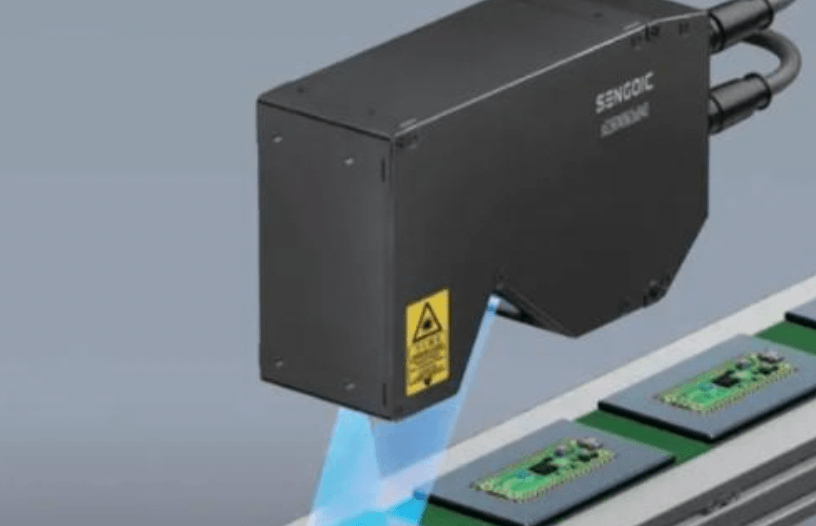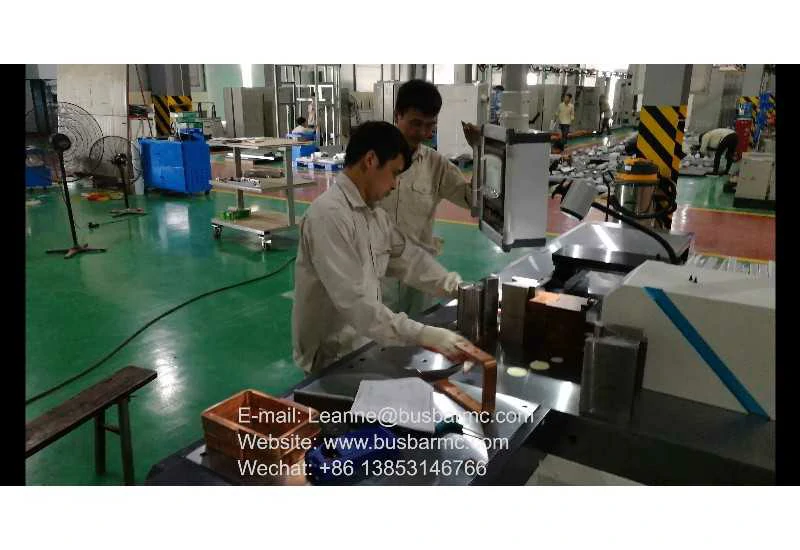Machine vision is the “eye” of the machine, compared to the human eye, it can not feel fatigue, 7X24 hours operation, but also than the human eye to see more, identify a wider color gamut, to distinguish the subtle cracks and color differences. These products as intelligent manufacturing in the “eyes”, workers can not use the eyes to complete the inspection task, it can easily complete, and properly achieve the effect of cost reduction and efficiency.
Thus, machine vision is becoming a part of the booming industrial “machine for people” process – it can identify objects, measure shapes, locate positions and detect defects. It does it faster, more accurately, and more consistently than people. China is the world’s factory, with a large number of industrial manufacturing needs, as “machine replacement” continues to accelerate, every factory and every enterprise is embracing digitalization and intelligence, and machine vision has become an essential part of the process.
Improve machine vision penetration rate, help China’s intelligent manufacturing take off
Machine vision can be traced back to 1969: Bell Labs successfully converted images into digital signals and used computers to calculate and analyze them, which led to the birth of CCD sensors and laid the cornerstone of machine vision.Over the decades, machine vision has gradually moved from concept to implementation, and has been used in semiconductor, aerospace, military, consumer electronics and other fields to provide identification, measurement, positioning and inspection functions for industrial production. In China, foreign companies such as Keenes and Cognex have occupied a large share of the Chinese machine vision market with their deep technical support. In recent years, however, the situation in the Chinese market is changing, with Chinese machine vision companies on the rise and domestic substitution underway.After decades of development, China’s machine vision technology has been significantly enhanced. According to the “China Industrial Machine Vision Industry Development White Paper”, China’s industrial machine vision market size reached 15 billion yuan in 2021, of which domestic brands exceeded 7.5 billion yuan to achieve the overtaking of international brands. After the rise of domestic brands at the same time, there is also a low penetration rate of machine vision applications – there are more factories and enterprises can use machine vision to achieve further improvements in production efficiency.There are two main reasons for this: one, the application cost is high; the other, the implementation is difficult, for practitioners with expertise in the use of difficult. Parts are the largest cost source of machine vision, consisting of light sources, light controllers, lenses, cameras and other devices, each precision instruments are expensive. Add to this the cost of software, component integration, and maintenance, and only large enterprises can afford to use them. Therefore, the expensive price limits the popularity of machine vision in industry. In addition, the program is not difficult to land, each industrial production scenario has special characteristics and requires specific industry knowledge, which challenges the knowledge background of the landing personnel. In addition, practitioners in the industry do not have the relevant computer knowledge to operate machine vision software. Therefore, to improve the cost performance and expand the machine vision landing scene is the key.

Machine vision three functions to help industrial development
At present, the industrial sector attaches great importance to the manufacturing quality of products, many companies to achieve product quality “zero defects”, the use of machine vision inspection technology to complete the production process of a series of product defect detection. The application of machine vision inspection technology in the industrial field not only has a role in promoting the transformation and upgrading of the manufacturing industry’s digital intelligence, but also has a very significant impact on the modern production process.
Machine vision inspection systems, also known as industrial vision systems, make measurements and judgments by replacing the human eye with a machine. Machine vision inspection system through the machine vision products (image ingestion device, divided into CMOS and CCD two kinds) will be ingested target into image information, and then transmitted to the special image processing system, and according to the pixel distribution, brightness, color and other information, into digital signals; image system to these signals for various operations to extract the characteristics of the target, and then according to the results of the discriminatory to control the field of The image system performs various operations on these signals to extract the characteristics of the target, and then controls the action of the equipment on site based on the discriminatory results. Currently, machine vision inspection systems are often used in industrial production, assembly or packaging.
With the continuous innovation and development of machine vision technology, the industrial automation industry is increasingly inseparable from the support of machine vision-related applications. For some production activities that require mass production, high appearance quality requirements, high production efficiency and precision requirements, the use of machine vision inspection systems can be a good solution to the problems of low inspection efficiency and low recognition accuracy. Machine vision inspection systems have many advantages in the field of industrial production.
Significantly reduce production costs: Machine vision inspection system capital investment is mainly early, a one-time investment to ensure long-term output, at the same time, not only to save labor costs and training costs, but also to carry out 24-hour continuous operation, and low maintenance costs. Improve product qualification rate: Machine vision inspection system can improve product inspection accuracy, achieve higher product qualification rate, and also output real-time data feedback so that engineers can quickly find the cause of defects. Non-contact inspection to avoid secondary contamination: Machine vision systems can avoid contact inspection of the product during the inspection process, thereby reducing secondary contamination.
The use of machine vision inspection systems can effectively control product quality and have greater assurance in terms of accuracy and overall quality. Especially in the process of high-volume repetitive industrial production, the use of machine vision inspection systems can significantly improve production efficiency and automation, greatly deepening the dependence of industrial automation on machine vision inspection technology.
In the field of industrial production, industrial automation for machine vision inspection system reliance, but also from the machine vision inspection function. Positioning function: Machine vision inspection systems can automatically determine the position of an item and output the position information by means of digital information. This function is used in automatic assembly and item sorting processes, such as automatic assembly, automatic packaging, automatic painting, cosmetic sorting, pork sorting, and courier sorting in the logistics industry. Measurement function: Machine vision inspection system can do automatic measurement of product dimensions, such as contour, aperture, height, area, etc., such as wood line round measurement in the wood industry. Detection function: defect detection of products is one of the most common functions of machine vision inspection systems, which can detect relevant information on the surface of products, such as the detection of surface defects of packaging boxes in the food industry, the detection of surface defects of fine blanking parts, etc., focusing on surface defects such as scratches, damage, oil, dust, etc.

Machine vision + robot, bring the future into reality
As the pace of smart factory construction accelerates, machine vision and mobile robots are playing an increasingly important role in industrial production. As a technology-based enterprise, Guizhou Zhongke Visi Intelligent Technology Co., Ltd. has been deeply engaged in the field of machine vision and intelligent manufacturing research and development, and has developed intelligent equipment such as machine vision and robot application design, which are widely used in many fields such as steel, electricity, hospitals and welding.
Ltd. located in Guizhou Science City, the staff is testing the angle and positioning of the newly developed bar automatic welding robot. As a robot system specially developed for the bar production line of steel enterprises, the welding plate robot integrates various functions such as 3D image recognition, automatic printing of product labels and automatic welding of labels. At present, the robot has been used in many domestic steel production enterprises.
Ltd. chief engineer Yang Lin pointed to a robot, said: this robot is mainly used to do nameplate welding for bundles of bars in steel mills, especially rolling mills. This application scenario was previously done entirely by human hands to do the welding plate action, but the site is high temperature and high risk. The welding plate robot can completely replace the manual work and achieve full automation 24 hours a day, avoiding the risk of manual work. Our company’s main research direction is the interaction of machine vision and intelligent devices, the main use is to replace the manual in a special environment of some work, these robots are mainly used in steel rolling mills, about 80% of the national steel rolling mills have our equipment.
Machine vision is to capture the appearance characteristics, size, color, texture and other information of objects through sensors and other devices to identify, classify, locate and measure objects and other operations to achieve intelligent automated production and inspection. At present, machine vision has been one of the key technologies affecting smart manufacturing and smart production. Established in 2019, Guizhou Zhongke Visi Intelligent Technology Co., Ltd. is a machine vision-oriented company engaged in the research and development, manufacturing and process improvement business of equipment such as visual inspection, intelligent inspection and unmanned traveling car, which helps industrial enterprises realize intelligent production.
Industrial intelligence is the general trend, and machine vision and optical measurement are the sailboat on this general trend, breaking the waves and setting sail. Covision brings the future into reality and makes industrial intelligence come sooner.



